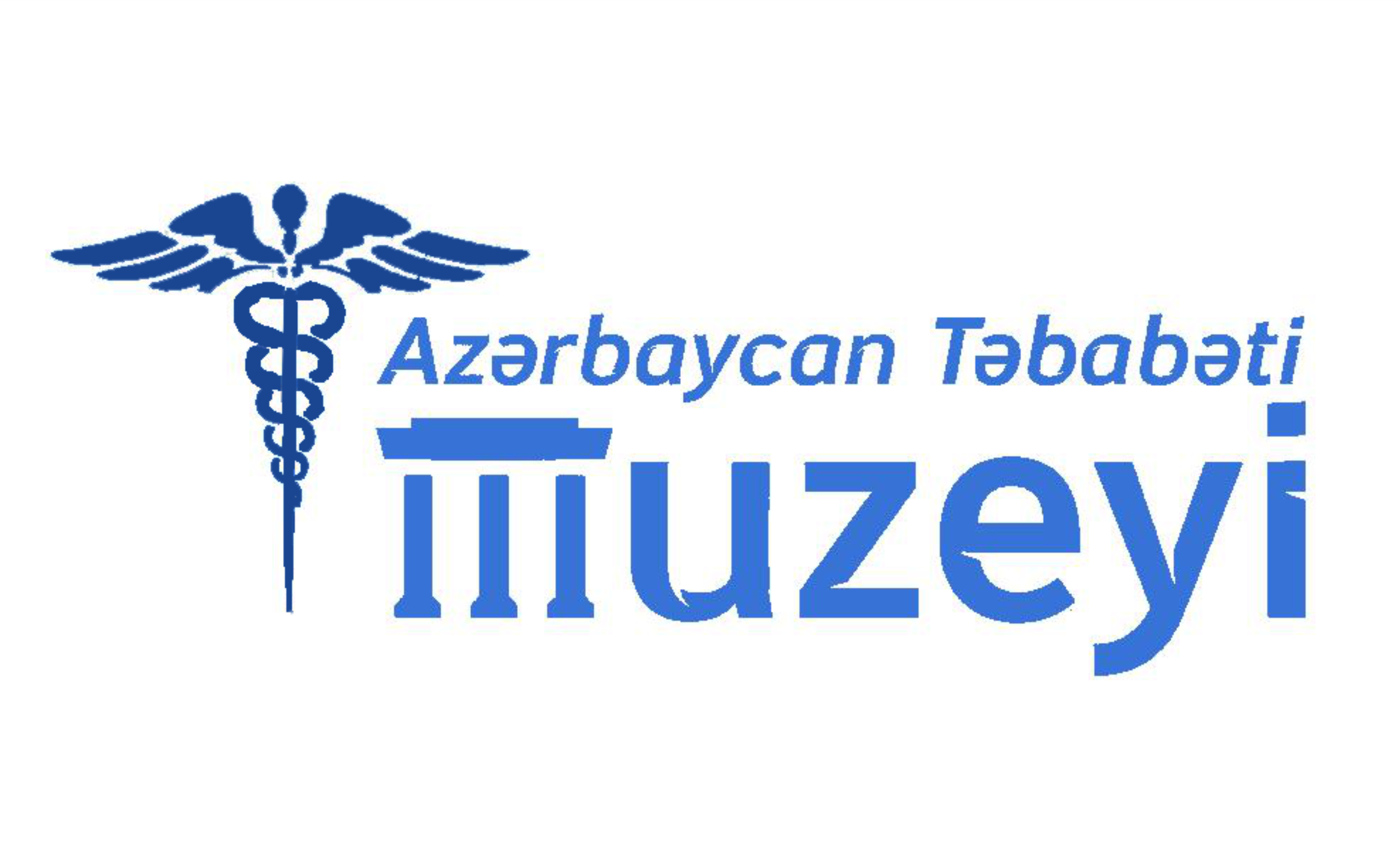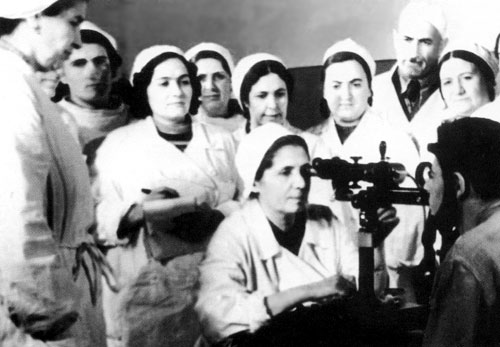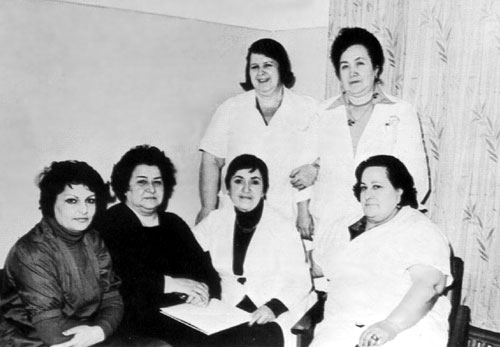ZARIFA ALIYEVA
Unforgettable Mrs. Zarifa Aliyeva, who reached the heights of spiritual greatness with her holy memory and sublime human qualities, was a unique person. The art that he chose became his tireless activity on the path of a meaningful life, to give people light. The light from his healing hands still shines in the eyes of the people he healed today. The divine light emanating from his wide heart and deep mind constantly illuminates the spiritual world of those who know him.
Academician Zarifa Aliyeva was an outstanding scientist of her time. Today we are consoled by the fact that we were lucky to work together with this bright person, to know him, to bow before the power of his talent. We are glad that new generations will always be proud of him, as we are. Academician Zarifa Aliyeva was one of the researchers who stood at the top of modern Azerbaijani ophthalmological science. Everything that made up the meaning of the life of this great man: science, a wonderful family, sincerity, kindness – everything was immersed in his light.
Ms. Zarifa was born in a wonderful family – in the family of an outstanding statesman, a major organizer of healthcare in Azerbaijan Aziz Mammadkerim oglu Aliyev. Most of the qualities of this great man were embodied in his daughter Zarifa. The characteristic features of Zarifa Aliyeva were sincerity, generosity, caring, demanding first of all to herself, and then to others, unity of word and deed, patriotism, unquenchable love for her people, Motherland and land.
After graduating from the Medical Institute and completing a specialization course in ophthalmology at the Central Institute for the Improvement of Doctors in Moscow, in 1949 he began his scientific career at the Azerbaijan Research Institute of Ophthalmology and worked his way up from a resident to a senior researcher. and formed as a professional specialist. In the first period of her scientific activity, Zarifa Aliyeva conducted relevant scientific research on the early diagnosis, treatment and prevention of trachoma. These searches, reflected in the Ph.D. thesis, were not only scientific, but also of great practical importance. The importance of these studies was evidenced by the fact that thousands of people were saved from blindness and returned to socially useful work. The complex of medical measures aimed at the eradication of trachoma in Azerbaijan belongs to Zarifa Aliyeva. We will not be mistaken if we say that the feature of obtaining maximum practical results from fundamental scientific research is characteristic of both this and subsequent works of the academician.
All subsequent scientific activity of Mrs. Zarifa was aimed at applying the achievements of medical science in ophthalmology. However, he has always been a supporter of the clinical direction in ophthalmology. In the 60s, the scientist was one of the first in the world to start large-scale scientific research on the problem of occupational diseases of the organ of vision. Although a number of scientific papers have been written on the study of the toxic effect of industrial poisons on the organ of vision, the effect on the eye of various ingredients of chemical production, especially occupational diseases, has been little studied. However, various combinations of chemical ingredients in many cases have a harmful effect on the human body and the organ of vision. As a result of long-term complex exposure to chemicals, dystrophic, proliferative processes occur in organs. Although the production of tires and iodine is high in many developed countries, detailed studies of the toxic effects of production waste on the body in these areas have not been conducted. One of the main directions of Zarifa Aliyeva’s scientific research was the study of eye lesions caused by the harmful effects of iodine and the tire industry. There are practically no analogues to this fundamental research in the world literature. More than 30 published scientific papers based on the results of Ms. Zarifa’s scientific research on the problem reflect the state of the organ of vision and its functions during chronic exposure to perchlorethylene, pesticides and styrene vapors. From this period, the main topic of Ms. Zarifa’s scientific research was the study of the state of the organs of vision of workers working in some branches of the chemical industry in Azerbaijan. The nature of the scientific research of the academician on this problem was the breadth of creative searches, the depth of analysis and scientific foresight.
Zarifa Aliyeva, not satisfied with the results, deepened the research topic and for the first time in the world discovered the influence of professional factors on the organ of vision, although in a small amount. The scientist regularly analyzed the results of his scientific research with his students and published them in the form of scientific articles, reports and guidelines.
The results of the fundamental scientific work carried out formed the basis of the doctoral dissertation defended by Mrs. Zarifa in 1976 at the Helmholtz Research Institute of Eye Diseases. Prominent scientists of this well-known institute and members of the specialized council highly appreciated the work and recommended publishing the results of many years of research in the form of a monograph, textbook and methodological recommendations. I still remember the statement of Zarifa Aliyeva, chairman of the academic council at the defense of her doctoral dissertation: “Congratulations to the honored doctor of sciences on a brilliant defense.” It was a great happiness!
Creative far-sightedness and the ability to correctly determine the pulse of life allowed Ms. Zarifa, for the first time in the world, to create a research laboratory in production conditions – in the workshops of the Baku Household Air Conditioners Plant. In addition to conducting scientific research, this laboratory has played a large role in the early detection and treatment of eye diseases. The scientific materials collected by this laboratory became the subject of Ph.D. theses of three students of Zarifa Aliyeva. The scientific activity of the academician is multidirectional in the department of modern ophthalmology and the research laboratory headed by him.
















